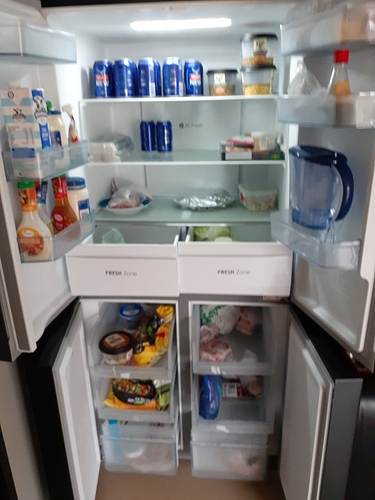Thank you for spending time on this.
The freezer has, 4by 37x26x15cm compartments and 2by 29x26x28cm.
I don’t how to work the out .2 loaves of bread fill one of the smaller compartments
@mark_m posted how fridges are sold re volumetric measures and manufacturers seem to universally state it on their own web sites.
From Choice (a popup on the reviews comparison) re the advertised ‘capacity’

It might be worth a shonky award. Buying something which doesn’t exist.
The background has been discussed in various places. Among others this forum. I’ll merge the topics.
Hi @phb, I’ll take this on advisement and talk to our fridge testers about it - they’re better placed than I am to answer this one for you.
Hi @phb, hi @Kanga2 ,
Thanks for your patience - I have an answer from our testers for you:
Both the gross and net volumes are required for registration, but we don’t always see the net volume on the fridges’ compliance plates, and we don’t use it in our test data either.
The marking requirements under the Australian Standard (the old one in this case - we’re transitioning to a new standard now) 4474.1:2007 Part 4 are:
- group
- compartment type(s)
- model,
- rated total gross volume
- rated gross volumes of each compartment, and
- date of manufacture
So there’s no legal requirement for manufacturers to to list net volume on promotional materials or websites, but if they don’t, you can look this up on the (free) Energy Rating website here:
https://reg.energyrating.gov.au/comparator/product_types/
It has gross volume:
Total Volume (litres)
The total gross volume of the refrigerator or freezer including all compartments (in litres).
(from the data dictionary) CompartGrVol compartgrvol This is the compartment gross volume expressed in litres (excludes shelving etc.)
and net volume:
(from the data dictionary) CompartNetVol compartnetvol This is the compartment net volume expressed in litres (may include shelving)
There is no explanation how this is measured. Presumably this is the one used in rating computations. How is it that gross excludes shelving but net includes shelving? Sorry, may include shelving. Why can’t they say if it does or doesn’t?
and adjusted volume (from the data dictionary):
Adjusted volume s__meps_vadjtot This is an adjusted volume accounting for the fresh food and freezer volume of the appliance.
Presumably this is different to net volume but in what way? I cannot find any explanation of how this statistic is derived or its purpose.
Yet more confusion about net volume.
As an aside, if a junior analyst produced that data dictionary for my project I would tell them to do it again.
Looking for new fridge to fit a small (by today’s expectations) space, liked the look of the LG GB-455WL reviewed at https://www.choice.com.au/home-and-living/kitchen/fridges/review-and-compare/fridges.
When looking for possible retailers, am amazed to find that the GB-455L reviewed as a 454L fridge is now a 420L fridge according to LG at https://www.lg.com/au/fridges/lg-GB-455WL.
Does this happen a lot?
Welcome to the Community @Bipedal_Primate
Manufacturers have been migrating to more realistic claims. Previous gross claims were all but meaningless in the real world. The ‘new capacities’ are closer to reality, based on usable capacity. ‘It’ will happen 100% of the time as time goes on.
I merged your query into this existing topic that might be helpful.
